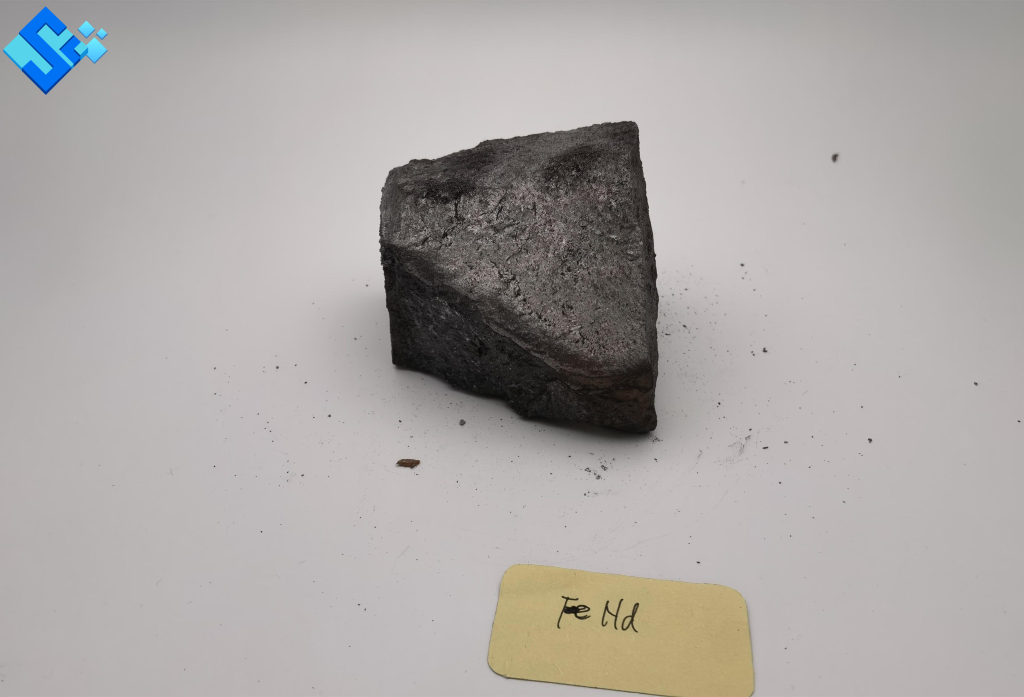I. Introduction to Neodymium
Neodymium, a chemical element, symbol Nd, has an atomic number of 60 and an atomic mass of 144.242 u, which belongs to the lanthanide series and is one of the rare earth elements.
Neodymium was discovered in 1885 by Austrian chemist Carl Auer von Welsbach. However, it does not exist in its pure metallic form in nature but is found in minerals such as monazite and bastnäsite along with other rare earth metals.
Although neodymium is classified as a rare earth element, it is relatively common in the Earth’s crust, with an estimated concentration of approximately 38 parts per million. Moreover, it is the second – most abundant rare earth element in the Earth’s crust, after cerium. Most of the world’s commercially used neodymium is mined in China.

II. Characteristics of Neodymium
(1) Physical Characteristics
Neodymium is a silver – white metal of medium hardness and slight ductility, which has a melting point of 1024 °C and a boiling point of 3074 °C. Neodymium is paramagnetic and becomes antiferromagnetic when cooled to −253.2 °C at room temperature,.
(2) Chemical Characteristics
Due to its high chemical activity, neodymium gradually oxidizes in the air, forming an oxide layer that peels off like rust.
Besides, neodymium burns easily at 150 °C to form neodymium oxide and becomes passivated. After the surface of neodymium oxide peeled off, the inner neodymium will continue to react with oxygen.
III. Applications of Neodymium
(1) Permanent Magnets
Neodymium magnets are the strongest known permanent magnets. A neodymium magnet weighing just a few grams can even lift objects up to a thousand times its own weight.
In fact, neodymium magnets are lighter and stronger than samarium – cobalt magnets. Nevertheless, as neodymium magnets are prone to corrosion and lose their magnetism at relatively low temperatures, their performance is not superior and perfect in all aspects.
Related applications in products include microphones, professional speakers, in – ear headphones, guitar and bass guitar pickups, as well as computer hard drives that require low mass, small volume, or a strong magnetic field.
(2) Glass Dyes
Neodymium glass can be manufactured by adding neodymium oxide (Nd₂O₃) to molten glass. The narrow spectral absorption bands of neodymium result in the color of neodymium glass to change under different lighting conditions. In daylight or incandescent light, neodymium glass usually appears lavender, while under fluorescent lighting, it appears pale blue. Neodymium is able to impart subtle shades to glass, ranging from pure purple to burgundy and warm gray.
(3) Lasers
Certain transparent materials doped with a small amount of neodymium ions can be used as the active laser medium in infrared lasers.
(4) Drive Motors for New – Energy Vehicles
Neodymium – iron – boron permanent magnets (containing at least 30% neodymium) are the crucial materials for drive motors in new – energy vehicles, significantly improving energy efficiency and enhancing power density.
(5) Wind Turbines
Permanent – magnet direct – drive wind turbines rely on high – performance neodymium – iron – boron magnets for efficient electrical energy conversion. Then each megawatt – class wind turbine requires approximately 1 ton of neodymium – iron – boron magnets.
(6) Servo Motors for Industrial Robots
Neodymium magnets enable high – precision motion control, of which each humanoid robot requires approximately 4 kilograms.
(7) Miniaturized Components in Consumer Electronics
Speakers and Vibration Motors: In devices such as iPhones, neodymium magnets drive micro – motors. Around 0.08 grams of neodymium will be needed in one mobile phone.
发表回复